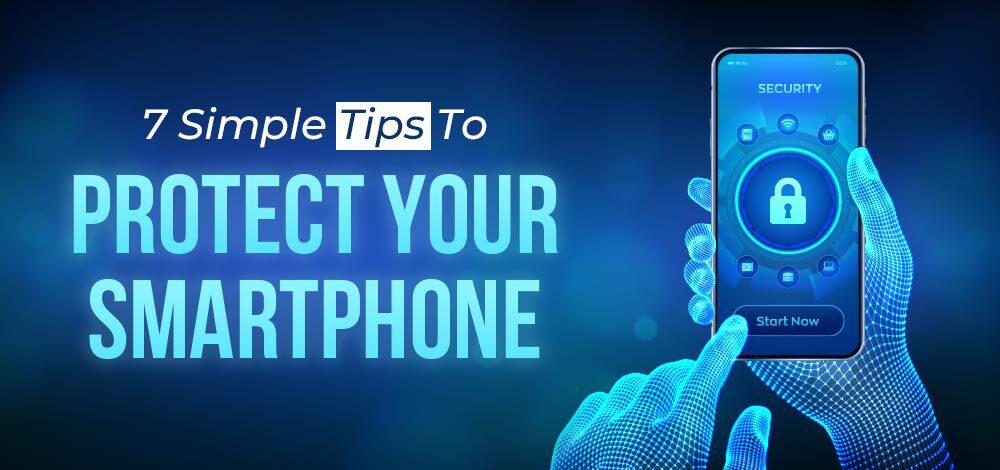In today’s hyper-connected world, our smartphones hold a treasure trove of personal information – from banking details and private photos to work documents and social media accounts. This makes them prime targets for cybercriminals looking to steal data, install malware, or commit financial fraud.
The good news is, that you can significantly reduce the risk of your smartphone being compromised by following some basic security best practices. This article dives deep into the National Security Agency’s (NSA) “Mobile Device Best Practices” guide, outlining essential steps to secure your iOS or Android device.

Daily Habits for Smartphone Security
Here are some easy-to-implement daily practices that can significantly enhance your smartphone security:
- Strong Passwords and Screen Locks: Ditch the simple four-digit PIN and opt for a strong, six-digit PIN or a complex alphanumeric password for your screen lock. Additionally, enable the feature that wipes your device data after 10 unsuccessful unlock attempts. This acts as a deterrent against brute-force attacks.
- Bluetooth: Use Wisely: Bluetooth is a convenient way to connect to headphones and speakers, but leave it disabled when not in use. This minimizes the attack surface for hackers who might exploit Bluetooth vulnerabilities.
- Beware of Public Wi-Fi: Public Wi-Fi networks are notoriously insecure. Avoid accessing sensitive information like bank accounts or online banking apps while connected to public Wi-Fi. If necessary, consider using a Virtual Private Network (VPN) to encrypt your internet traffic.
- Maintain Physical Control: Your smartphone is a personal device. Keep it with you at all times and avoid leaving it unattended in public places. This simple precaution can prevent physical theft, which can be a gateway to further security breaches.
App Management: Keeping Your Digital Ecosystem Safe
The apps you install on your phone can be a double-edged sword. While they offer a plethora of functionalities, they can also pose security risks if not managed properly. Here’s how to maintain a secure app environment:
- Download from Official Sources: Only install apps from official app stores like the App Store or Google Play Store. These stores have vetting procedures in place to minimize the risk of malware distribution. Avoid downloading apps from untrusted third-party sources.
- Essential Apps Only: Don’t clutter your phone with unnecessary apps. Stick to installing only the apps you genuinely need and use regularly. The fewer apps you have, the smaller the attack surface for potential vulnerabilities.
- App Permissions: Be mindful of the permissions you grant to apps. An app requesting access to your location or microphone when it doesn’t seem necessary might be a red flag. Only grant permissions that are essential for the app’s functionality.
- Close Unused Apps: Many apps run in the background even when not actively in use. This can drain battery life and potentially expose vulnerabilities. Make it a habit to close apps you’re not actively using to tighten your phone’s security.
Staying Updated: Software and Apps
Software updates often contain critical security patches that address vulnerabilities exploited by cybercriminals. Here’s why keeping your software and apps updated is crucial:
- Install Updates Promptly: Whenever software updates are available for your phone’s operating system or apps, install them promptly. Don’t procrastinate – timely updates are essential for maintaining a secure mobile environment.
- Automatic Updates: Consider enabling automatic updates for your phone’s operating system and apps whenever possible. This ensures you’re always protected with the latest security patches.
Be Wary of Social Engineering and Phishing Attacks
Cybercriminals often rely on social engineering tactics to trick users into compromising their own devices. Here’s how to stay vigilant against such attempts:
- Think Before You Click: Never open suspicious email attachments or links, even if they appear to come from a trusted source. Phishing emails often try to trick you into clicking on malicious links that can download malware onto your device.
- Beware of Pop-Ups: Unexpected pop-ups on your phone can be a sign of a malicious website or app. Don’t interact with them. Instead, force close the browser or app immediately.
Advanced Security Measures
For users who want to take their smartphone security to the next level, here are some additional tips:
- No Jailbreaking or Rooting: Jailbreaking an iPhone or rooting an Android phone gives you more control over your device, but it can also bypass security measures built into the operating system. These modifications can make your phone more vulnerable to attacks. Unless you’re a highly technical user, avoid jailbreaking or rooting.
Frequently Asked Questions
Q: Is a fingerprint or facial recognition unlock secure enough for my phone?
A: While fingerprint and facial recognition unlock features offer convenience, they might not be as secure as a strong PIN or password. Consider using a PIN or password in conjunction with fingerprint or facial recognition for an extra layer of security.
Q: What if I accidentally download a malicious app?
A: Most reputable antivirus and security apps can scan your phone for malware. Consider installing a reputable security app from a trusted source and running regular scans.
Q: I’m not very tech-savvy. Can I still secure my phone?
A: Absolutely! Many of the tips in this article, like using strong passwords and keeping your software updated, are easy to implement regardless of technical expertise.




